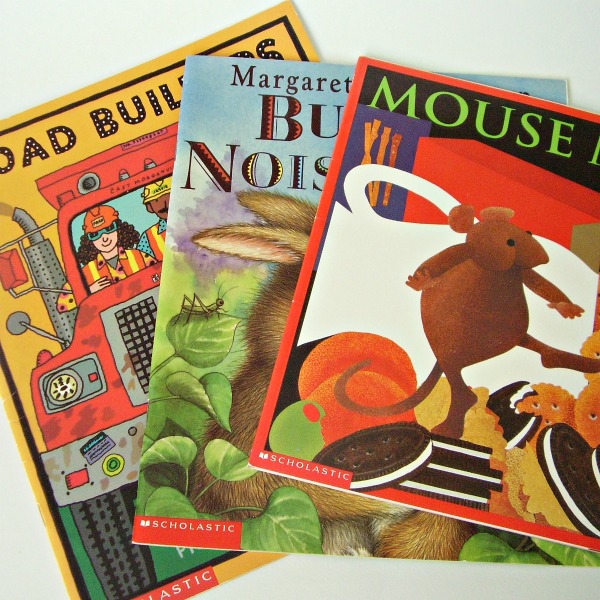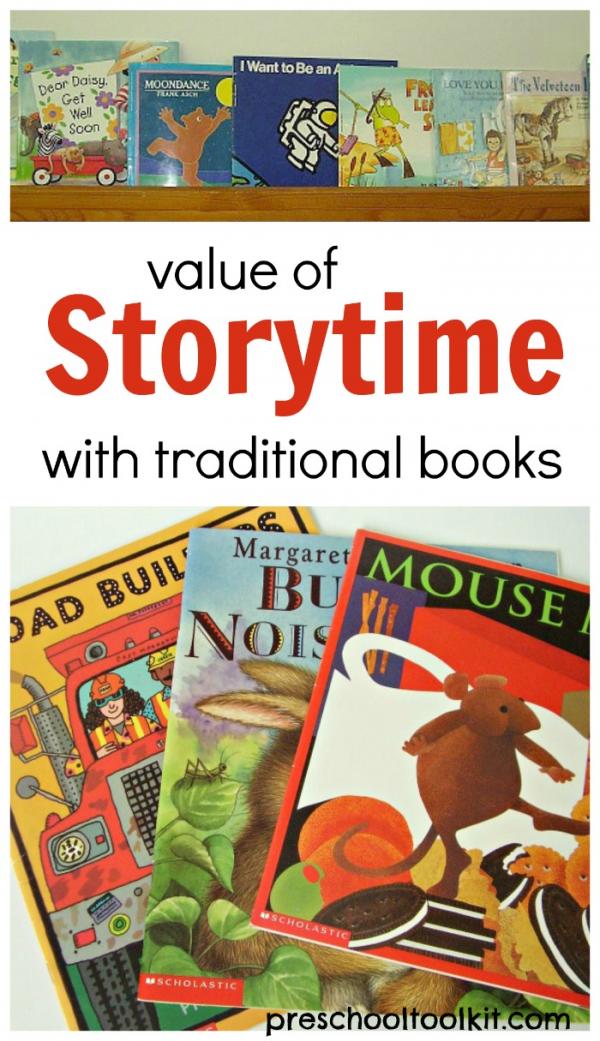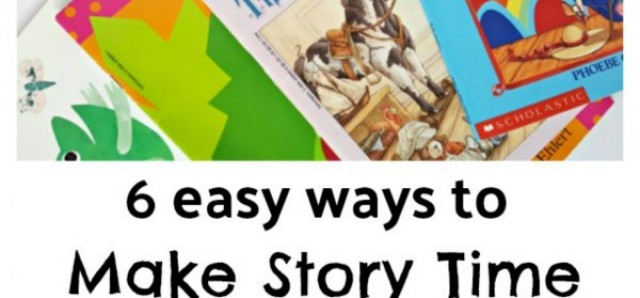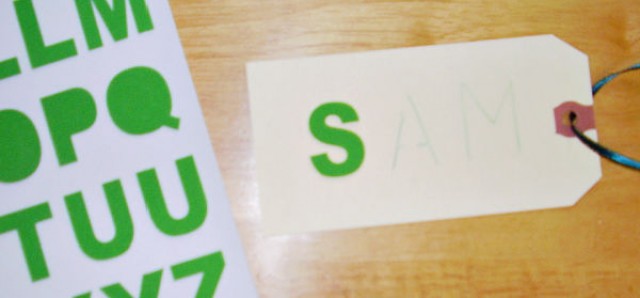Value of Traditional Books in Early Literacy
Traditional books add value to early childhood development in many ways. They nurture a love of books and reading while building early literacy skills. Explore the many ways that hands-on interaction with printed material will benefit your early learners.

This post contains affiliate links. Privacy and Disclosure
It's hard for kids - and grownups! - not to love traditional books. There's a whole lot going on when reading books.
- We're drawn to the colorful images; the rustle of pages turning; the cozy reading times with family and friends.
These simple pleasures add tangible interaction to the joy of reading. But there's a lot more to appreciate about books.
In today's world, digital devices can replace or augment our traditional reading experiences. This applies to kids as well as to grownups, as computers may be present in classrooms as early as preschool level.
Screens and devices are a part of our daily lives. But reading material can intentionally be made available in a variety of different formats.
Early childhood is where a journey into developing language and reading skills begins. Traditionally published books can be an valuable part of that journey.
Value of traditional books
Part of the benefit of introducing, and relying on, traditional books is that there is no shortage of books and printed materials to draw from when we are planning story times.
- Books are available at no cost in libraries.
- Many book titles are easily ordered online, and at reasonable costs.
- Books can be shared among family and friends.
- Local organizations often donate books, or funds to purchase books, to schools and other institutions.
We recognize that traditional books are just part of the literary experience, but they are an important one. Their value is realized in many different ways.
1. Traditional books vs digital text
There are many studies that discuss the issue of printed material versus digital text on e-readers and other devices.
1. This article discusses a study indicating better comprehension achieved in some cases through printed books.
2. This article guides parents through the pros and cons of both options
Without discounting the benefits of technology, I believe in the value of traditional story books to the early learning community. Traditional books complement the reading experience in ways that e-readers cannot.
- Reading from printed material is a tactile experience. Books have size and weight, pages to flip, flaps to lift, padded covers, or contrasting inserts.
- Children can pick up a book and immediately become engaged, while the e-reader requires knowledge and time to access a desired story page or app. Even though young people are known to be adept at figuring out the technology, an adult needs to be available to assist with the acquisition.
- Traditional books do not require batteries, software updates, etc.
- Traditional books are free of the distractions that come with online reading, such as advertisements, music or screen prompts.
- Printed materials such as activity books and coloring books initiate practice of fine motor skills involving pencils, crayons, erasers, or stickers.
- Traditionally books released by a publishing company have undergone a rigorous review/editing process, which must now be translated to the online market. With so much information available online, it is important to be aware of the quality and content of reading sites.
A combination of both digital and printed reading material may still be the best solution. In both cases, parents and teachers enhance the value of reading experiences by engaging with kids and interacting as they read.
Regardless of the medium, the reading process benefits kids with opportunities to ask questions, make comments, and express their emotions.
2. Tips for reading to preschoolers

Teach young readers to appreciate the whole book.
- Examine the cover for characters or words that might provide clues to the story.
- Identify the title, the author and the illustrator.
- Draw attention to the way words are made up of the letters of the alphabet, displayed on the chart on the classroom wall!
- Read slowly and clearly, pausing when necessary to allow words to be explained, details in images to be pointed out, or personal experiences to be related.
3. Tips to encourage independent reading

A wide range of book options is available for independent reading at all levels: cloth for babies; board books for toddlers; picture books for preschoolers; chapter books for early readers.
At home or in the classroom, have both soft cover and hard cover books on hand for independent play and quiet times, as well as transition times.
- Make books accessible on low shelves or tables, or in a basket, so children can make selections on their own.
- Limit the number of titles on the shelf at one time. Too many options can be distracting.
- Keep covers visible. Avoid stacking books.
- Refresh titles often.
Read traditional books often to support literacy skills
The convenience of reaching for a book helps kids learn at an early age to engage with reading material.
Making traditional books available prompts kids to recognize the role literature plays in everyday life - for information and for entertainment.
Best of all, every page they turn can become a new adventure, and inspire a quest for more books to explore.
Read and enjoy!

Literacy Activities on Pinterest


